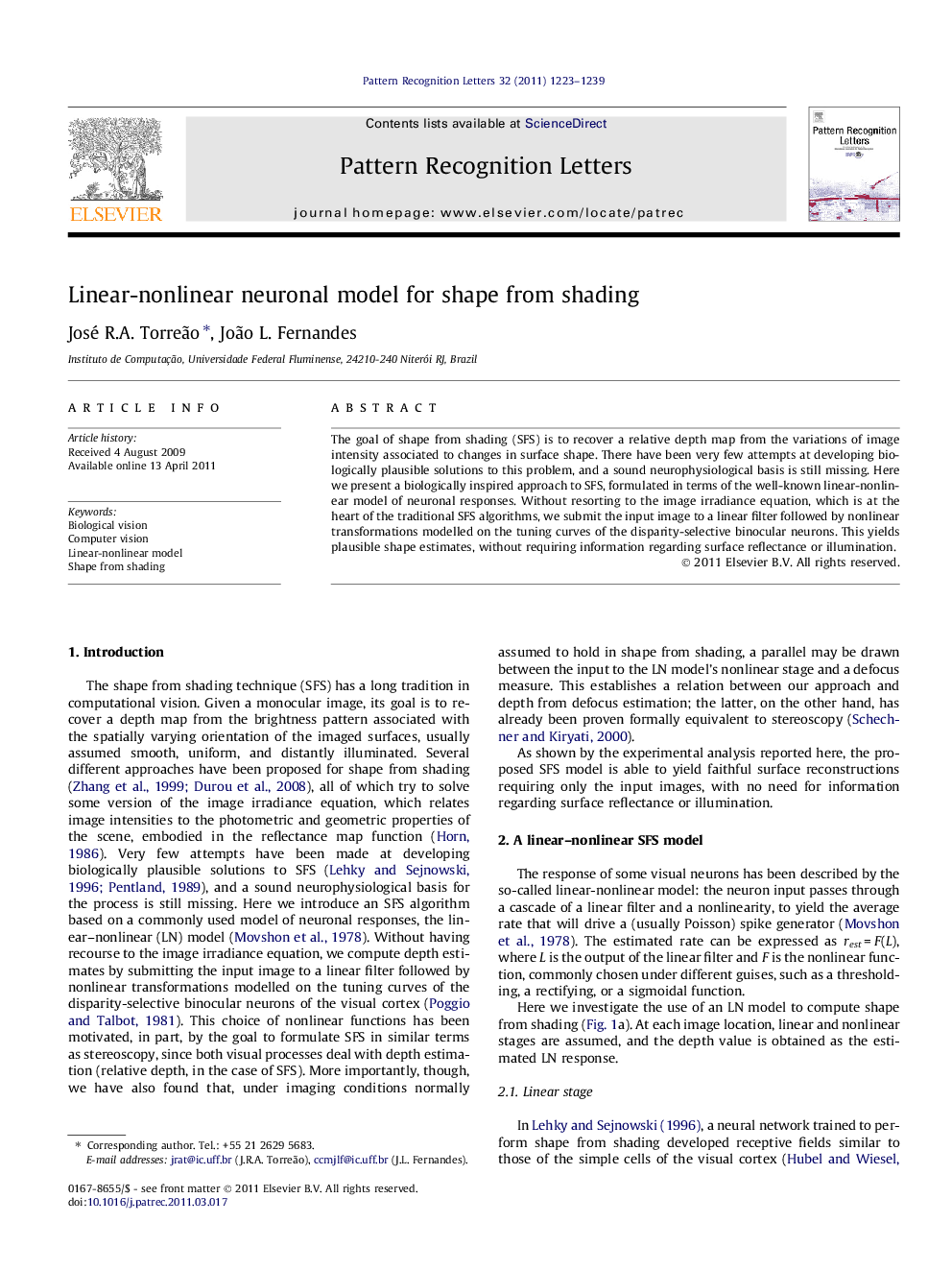| Article ID | Journal | Published Year | Pages | File Type |
|---|---|---|---|---|
| 534223 | Pattern Recognition Letters | 2011 | 17 Pages |
The goal of shape from shading (SFS) is to recover a relative depth map from the variations of image intensity associated to changes in surface shape. There have been very few attempts at developing biologically plausible solutions to this problem, and a sound neurophysiological basis is still missing. Here we present a biologically inspired approach to SFS, formulated in terms of the well-known linear-nonlinear model of neuronal responses. Without resorting to the image irradiance equation, which is at the heart of the traditional SFS algorithms, we submit the input image to a linear filter followed by nonlinear transformations modelled on the tuning curves of the disparity-selective binocular neurons. This yields plausible shape estimates, without requiring information regarding surface reflectance or illumination.
► We have developed a biologically inspired approach to the Shape from Shading estimation problem (SFS), formulating it in terms of the well-known linear-nonlinear model of neuronal responses. ► Using this approach, we have been able to obtain plausible shape reconstructions from the images of Lambertian and quasi-Lambertian surfaces captured under various illuminations, without requiring reflectance map information. ► Our estimates prove competitive, and even superior, to the ones yielded by traditional SFS algorithms, as demonstrated by our experimental analysis. ► The whole formulation presented is novel, and represents an important step towards establishing a sound neurophysiological basis for the SFS process.
